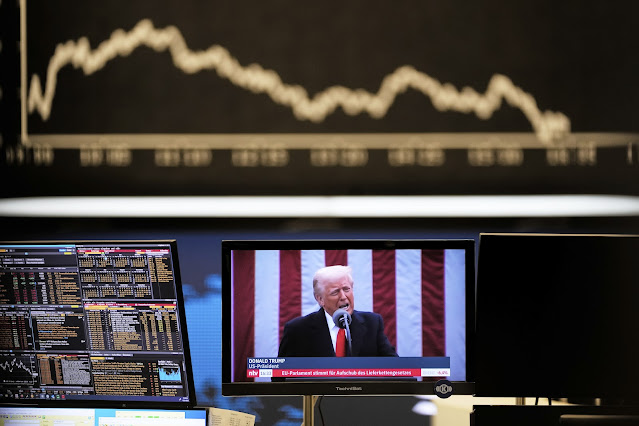During those initial days, administration officials expressed optimism, suggesting that a flurry of negotiations could yield numerous trade agreements within three months. “We’re going to run,” had declared White House trade adviser Peter Navarro, asserting that striking 90 deals in 90 days was feasible.
However, as the deadline approaches, the anticipated agreements remain largely unrealized. The US is once again contemplating imposing steep tariffs, with proposed rates reaching 27% on Kazakhstan, 47% on Madagascar, and 36% on Thailand.
"Trump early Friday at Joint Base Andrews told reporters that he would notify 10 to 12 nations a day over the course of the next five days, detailing their new tariffs in letters that the White House would begin sending on Friday. In most cases, the new rates would go into effect August 1, Trump said. “They’ll range in value from maybe 60% or 70% tariffs to 10% and 20% tariffs, but they’re going to be starting to go out sometime tomorrow,” Trump said. “We’ve done the final form, and it’s basically going to explain what the countries are going to be paying in tariffs.” (CNN)
When asked about the impending deadline, Trump downplayed concerns, stating, “I’ll be writing letters to a lot of countries. And I think you’re just starting to understand the process.” This assertion, however, contrasts sharply with the sentiments of business leaders, lobbyists, and economists, many of whom are left wondering: will these tariffs actually be enacted?
Marc Busch, a professor at Georgetown University, expressed cautious skepticism. “I would suspect he’s serious,” he noted, suggesting that countries negotiating in good faith might receive leniency. Yet, as the July 9 deadline looms, the prospect of imposing tariffs reminiscent of the 1930s hangs in the balance.
Some agreements have emerged, including a partial deal with the UK and a tentative understanding with China. However, these arrangements fall short of comprehensive free trade agreements and appear more as temporary measures to de-escalate tensions. “These aren’t real trade deals. These are cessations of hostility,” Busch remarked.
Even if Trump decides to extend the pause or rapidly form new agreements, current tariff levels are already significantly higher than those before his administration. The resulting economic impact is beginning to affect prices for American consumers.
John Waldron, president of Goldman Sachs, noted a positive shift in the US economy compared to initial expectations. However, he cautioned that inflation concerns persist as the summer progresses.
Mid-sized US businesses could face an estimated $82.3 billion in extra costs if the universal 10% import rate remains, compounded by additional tariffs on imports from China, Mexico, and Canada. Analysts from JPMorgan Chase Institute warn that struggles among these businesses could trigger broader economic repercussions.
Should the tariffs be reinstated after the pause, costs could escalate further. Even without new tariffs, the existing duties have already imposed a significant financial burden on companies. Busch likened this approach to a retailer drastically hiking prices and then offering a discount—creating confusion and uncertainty for businesses trying to plan ahead.
Jerome Powell, chair of the Federal Reserve, has been particularly candid about the ramifications of tariffs, emphasizing that someone ultimately bears the burden of these costs. “All through that chain, people will be trying not to be the ones who pick up the cost,” he said, underscoring that consumers will likely feel the impact.
Trump, however, maintains that tariffs are a burden for foreign countries, rather than American businesses or consumers.
In the coming days, as the situation unfolds, many analysts speculate that the overarching trend of high and widespread tariffs may persist for years. “High and broad-based tariffs are likely to remain,” stated Michael Pearce, deputy chief US economist at Oxford Economics, emphasizing the challenge future administrations will face in replacing the revenue generated by these measures.



No comments:
Post a Comment